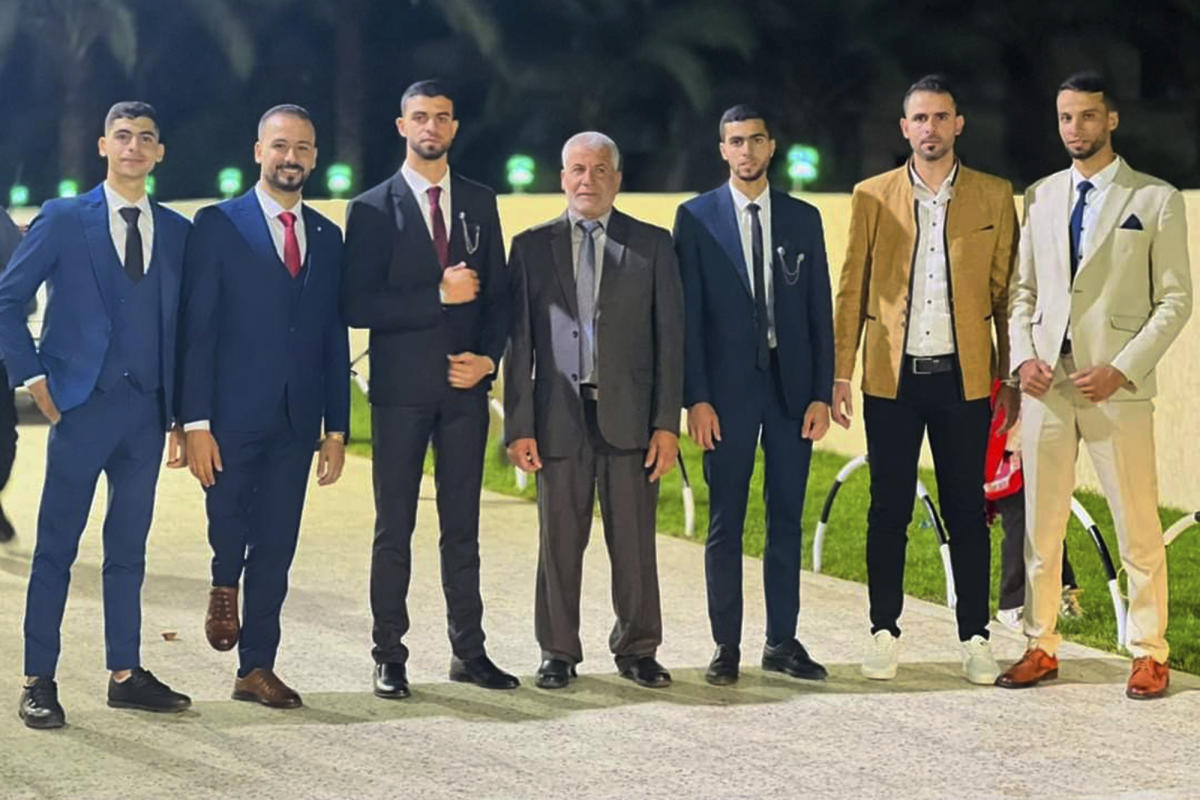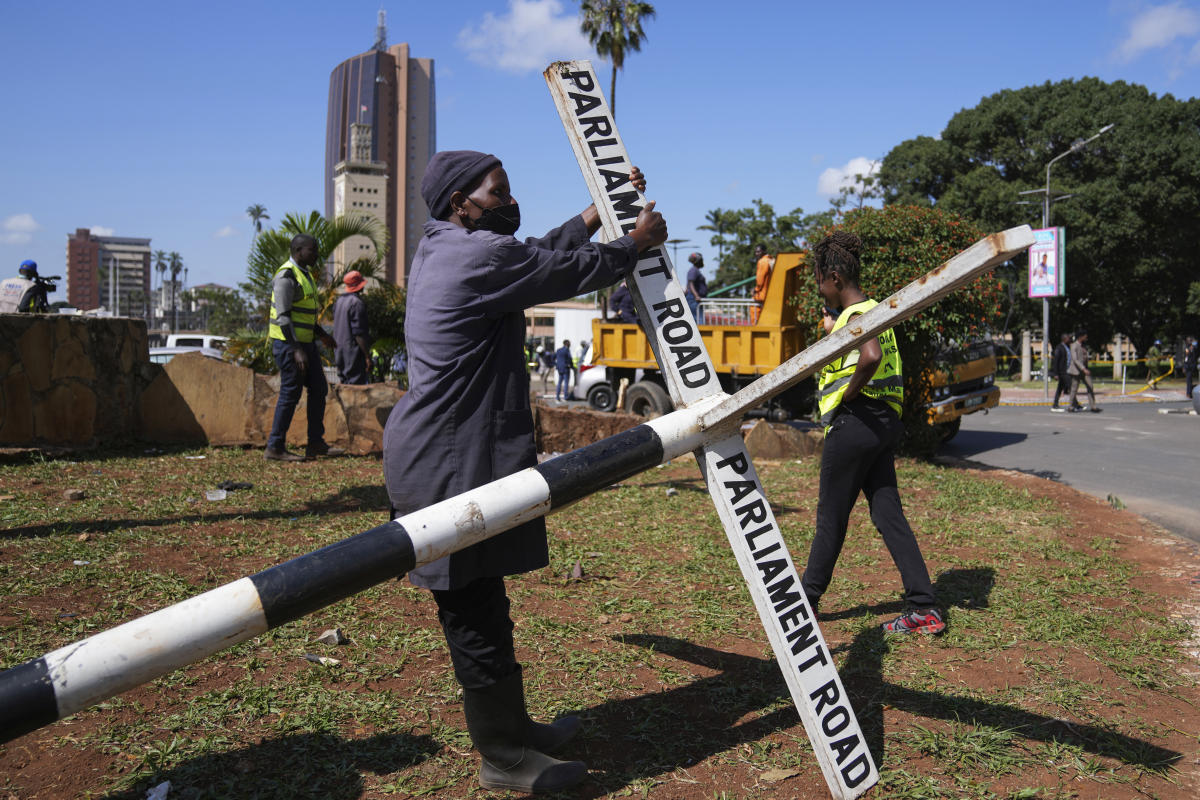BEIRUT (AP) — Israel’s air and ground campaign in Gaza has killed hundreds of relatives of the same bloodline, an unprecedented toll on the small community made up mostly of refugees and their descendants.
An Associated Press investigation analyzed 10 attacks in the Gaza Strip between October and December that killed more than 500 people. Nearly every Palestinian family has suffered heavy, multiple losses. But many were decimated, especially in the early months of the war.
AP geolocated and analyzed the attacks; consulted with weapons researchers; open data analysts and legal experts; and used data from Airwars, a London-based conflict monitor. They hit residential buildings and shelters with families inside. In no case was there an obvious military target or direct warning to those inside. In one case, the family said they raised a white flag on their building in a combat zone.
This war has proven even deadlier than the 1948 displacement from Israel, said Rashid Khalidi, a Palestinian-American historian at Columbia University, when 20,000 people were killed in what is known as the Nakbah, or Catastrophe.
“I don’t think anything like this has happened in modern Palestinian history,” Khalidi said.
Al-Agha family, 31 dead
On October 11, an airstrike destroyed Amin al-Agha’s house in western Khan Younis. The 61-year-old was sleeping on the ground floor of the two-storey building with his wife and three sons. The top floor was the home of his son Muhannad al-Agha, 30, his wife Hind and their two girls, Talin, 2, and Asil, 1. The airstrike killed 11 people, including two cousins in an adjacent building .
“It wasn’t a house anymore. It was a pile of sand,” said Jaser al-Agha, a cousin who arrived shortly after the attack.
Early October 14, an Israeli bomb hit the home of Khamis al-Agha, an employee of a Hamas-affiliated charity. The three-storey building in the center of Khan Younis was reduced to rubble. Among the dead: Khamis al-Agha, 38, his wife Nisreen, two sons aged 11 and 13, two daughters, 8 and 6, and his younger brother and 9-year-old son, a cousin and her son. Only the brother’s wife survived.
On November 14, the home of Awni al-Agha, a second cousin of Khamis, was hit, destroying the three-story building in the west of Khan Younis. Brian Castner, a weapons researcher at Amnesty International, said the damage also indicated it was an airstrike.
Only a satellite dish stood out above the rubble. Awni al-Agha’s wife, 64-year-old Samia, was killed in the strike; his four sons, aged between 42 and 26, his daughter Ramah, 41, her husband and two sons, aged 18 and 16. Awni al-Agha, a government education official, survived because he woke up for morning prayers. Three months later, in February, Awni al-Agha died at the age of 69, most likely of a broken heart, Jaser al-Agha said.
Emily Tripp, director of Airwars, said her investigators were struggling with the murder of entire families, spanning generations.
“Sometimes we had to build family trees to understand the harm to civilians,” she said.
Abu Naja family, 20 dead
Israeli aircraft hit the homes of the Abu Naja and Madi families in southern Rafah on October 17. Twenty members of the Abu Naja family were killed immediately, including two pregnant women and eight children. The airstrikes killed the 78-year-old grandmother, her granddaughter and her children. Airwars said one of the slain men was identified on Facebook as a “Mujahid,” or “warrior.” His wife, pregnant sister and her 2-year-old daughter also died.
Killing a combatant who is not taking part in hostilities and is in a place full of civilians is considered a violation of the laws of war.
Tarzai and Souri families, 20 dead
An Israeli airstrike destroyed a church building in Gaza City where hundreds of displaced people were sheltering. The October 19 strike killed 20 members of the intermarried Tarzai and Souri families from Gaza’s dwindling Christian community, including at least seven children. Ramez al-Souri lost all three children and his wife.
The Israeli army said it had attacked a Hamas command and control center and accused the group of intermingling with civilians. It was recognized that a church wall had been damaged.
Amnesty visited the site and analyzed videos, including one posted by the Israeli army and since deleted, and concluded it was an airstrike. Even if a military target was identified, Amnesty said, it was “reckless and therefore amounts to a war crime.”
Jabalia refugee camp, more than 130 dead
The Israeli bombing of October 31 was among the deadliest of this war. The Jabalia refugee camp was one of Gaza’s most densely populated areas and has been hit several times since October 7. The actual toll remains unknown as many are still buried under the rubble.
Airwars reported 112 civilians killed from 11 families, including 69 children and 22 women. Among them were at least 47 members of the Okasha and Abou al-Qoumsan families. AP identified another seventeen people from the Al-Quoumsan family, where uncles, fathers and children were killed.
The bombs left several craters in an area extending for more than 100 meters (yards). Several buildings collapsed. “This is equivalent to the largest craters we have seen in the last 20 years,” says Cobb-Smith.
Israel said it targeted a Hamas command and control center and a Hamas battalion commander inside it, believed to be the oldest member of the group killed so far.
Doghmush family, 44 dead
An attack on a mosque in Gaza City’s Sabra neighborhood in the early evening of November 15 killed at least 44 people from the Doghmush family, including the head of the family, a 9-year-old community leader and two female relatives . in an adjacent building.
The damage appeared to be limited to the upper floors of the mosque. In a video taken afterwards, there was no crater and the mosque appeared to have been cleared. There were no signs of significant damage in the area, suggesting the mosque may have been directly targeted by small aerial munitions, said Chris Cobb-Smith, a former UN weapons inspector and British army officer who has conducted research in Gaza after previous wars .
The mosque was built and owned by the Doghmush family. Ragab Doghmush, whose 21-year-old brother was killed, said the mosque has no militant links and the family does not allow any militant activity in the area. A feud between the Doghmush family and Hamas dating back to Hamas’s seizure of power in 2007 has kept the area largely inaccessible to Hamas militants.
Salem family, 173 dead
Israeli airstrikes destroyed two separate shelters for the Salem family on December 11 and 19. At least 173 family members were killed, including children, at least one pregnant woman and many elderly people, including the 87-year-old head of the prison. the family.
The December 11 airstrike hit a block of family buildings. One was destroyed, while others lost their facades. Experts said the limited damage indicated it was a large bomb programmed to delay an explosion until after impact.
At least eighty people were killed, including several generations of the same bloodline. Relatives said there was no apparent fighting activity in the area.
On December 19, an Israeli airstrike hit another group of displaced members of the Salem family, who were hiding in a villa in Rimal. The attack left a deep crater, but the surrounding buildings were undamaged. Survivors said tanks rolled over the rubble. At least 90 Salems were killed.
“I saw the bodies of my uncles and cousins strewn across the floor,” said Mohamed Salem, who survived the December 19 strike. “We could only identify the bodies through their IDs. It was just a lot of meat.”
Maghazi refugee camp, at least 106 dead
Witnesses said that on December 24, at least four houses where many displaced Palestinians lived were directly hit. Body parts were strewn across the surrounding areas.
Videos showed damage consistent with airstrikes. Images showed several destroyed houses in narrow alleys with small buildings, mostly one-story, and a large crater at the entrance to the camp.
The AP had access to hospital data after the attack, which recorded 106 deaths. Based on public obituaries and partial data from the Ministry of Health, AP was able to identify 36 people from the Nawasreh, Abu Hamdah and Qandil families.
Israel said it targeted Hamas militants and accidentally hit two adjacent buildings.
In its first and rare statement admitting a mistaken attack, Israel said it regretted the “injury to those not involved.” It said it had taken the necessary measures to prevent harm to civilians. A military official told Kan, Israel’s public broadcaster, that the wrong weapon was used in the attack, without elaborating.
___
Contact AP’s global investigative team at Investigative@ap.org or https://www.ap.org/tips/







